When we first came up with the idea to design and build a needle to make it easier for me to weave with fabric strips, my husband and I had no idea other people would want one. Never in my wildest dreams would we be mass producing or selling them through a distributor. When we first started on this journey, it was all about sharing a fun adventure while building community around fabric weaving. Along the way, we took calculated risks to see how much we could grow the WEFTY Needle as a business. My goal in sharing the story of how the WEFTY Needle was developed and manufactured is two-fold: I want to encourage you to pursue your own product development ideas, and I also want to help you plan ahead so your idea can be executed as successfully as possible.
My husband first designed the “TJaye Flat Fabric Weaving Needle” for our 3D printer in late 2015 using OpenSCAD. We tweaked it until it was exactly what I wanted, and we printed a few sets. I began offering them for sale in January 2016 on Instagram, invoicing through PayPal. We priced them at $10 per set, which is what a person would have to pay to have them printed at a 3D printer online. Each set took us two hours to print. I sold out within an hour or two every time I posted them to Instagram, and often I would sell the set I was using and print myself a new set so I could weave.
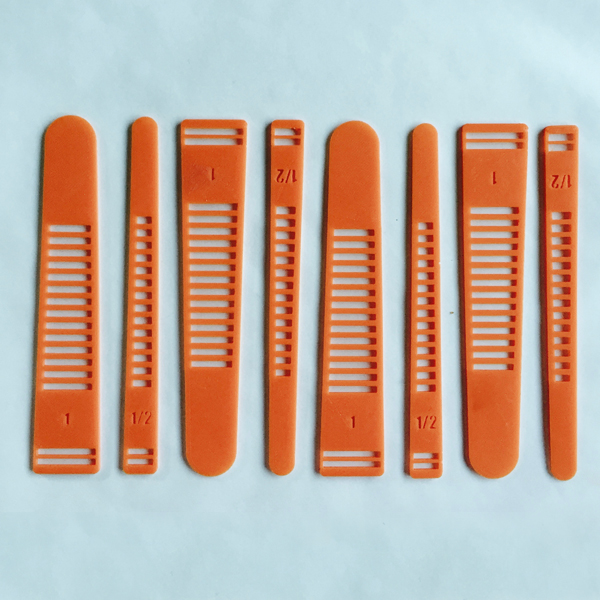
The very first 3D printed WEFTY Needles.
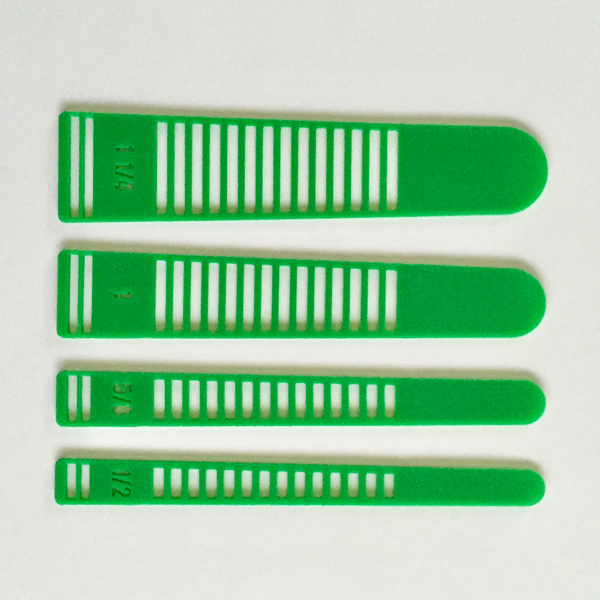
Four sizes of the early 3D printed WEFTY Needles.
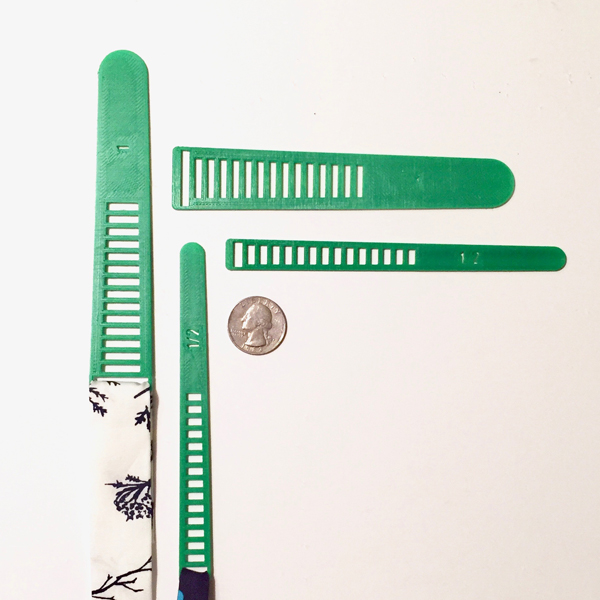
Getting close to the final 3D printed design of the WEFTY Needle.
At around this time, I realized the name of my product was so long I couldn’t remember it. I talked to a trademark attorney who offered me some advice about how to come up with a name. She said I should write down several possible names, making sure that they weren’t things, names, or words that describe the object. For example, I couldn’t trademark “Tara Jaye” or “Weave Masters,” but a name like “Wefty” could be a trademark because it is not a word or name. The attorney quoted her price for helping me file for a trademark with the USPTO, but I found searching for an existing mark and filing an application was really easy online. The process takes several months to complete and costs around $200, but it’s worth doing if you want to differentiate your product with a protected name.
In February of 2016 I began receiving wholesale inquiries and we struggled to meet those orders while printing needles to sell retail. I started listing in an Etsy shop, and changed the name to WEFTY Needle. We asked for design feedback from weaver Mathew Bourdeaux, whom I met on Instagram and who used the WEFTY Needle a lot, then incorporated our desired changes and came up with the final design we use today. At this point we were offering needles in ½”, ¾”, 1”, and 1 ¼” sizes, but we dropped all but the 1” and ½” sets to focus on meeting demand. We were printing about eight sets a day, every day.
Sadly, the 3D printer began to object to the heavy usage. At one point, a wire melted! We began researching a few ways to mass produce. Mold casting with resin was too time sensitive and toxic. I had two littles underfoot—my girls were both less than three years old and home with me at the time. Laser-cut acrylic wouldn’t work. Acrylic is brittle with no flexibility. Also, the gills (what we call the slots in the WEFTY needle) created structural weak points. Injection molding seemed the best option as the final product would most resemble the 3D-printed WEFTY.
Once we settled on injection molding, we contacted several small-batch manufacturers. The process of vetting companies was incredibly time consuming, and responsiveness became almost as important as pricing. We spent seven months selecting and working with a company before we received our first batch order in late September 2016.
One concern I had about injection molding was that even with small batch manufacturers, often the minimum first order is 1,000 units.
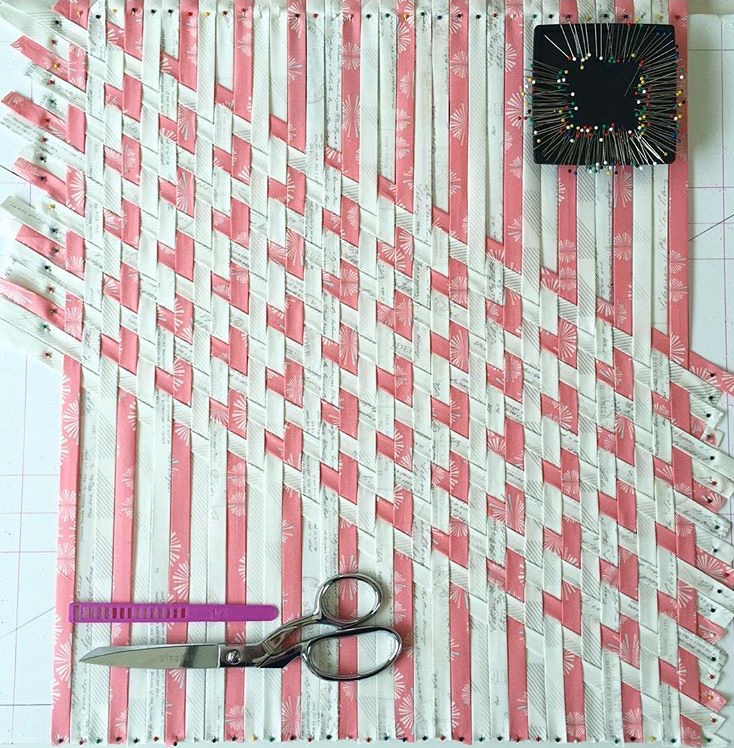
Tools to make weaving a success include the WEFTY Needle, magnetic pin cushion, woven interfacing, foam core board, a bias tape maker and lots of starch. Tara shares her tips on her blog.
I worried about making that kind of investment on top of the cost of the mold, which costs multiple thousands of dollars. In order to carefully consider what ordering this much inventory would mean, I averaged my monthly sales up to that point. I used that number to come up with how many I could expect to sell in a year. Armed with that information, I expected that I could manage to sell my inventory in a year, and possibly pay off the mold in two years. (This calculation did not factor in any other costs of doing business, e.g., marketing, travel, supplies, shipping, etc.) Based on my initial projections, my husband and I felt that injection molding was a worthwhile investment. Our hope was to eventually break even, and be able to say that we had manufactured something together.
In the end, we went with a company that was able to create a “family mold,” meaning one mold would house both sizes of WEFTYs. The alternative would have been one mold per needle size. Depending on design, an injection mold can cost anywhere from $1,500 to $5,000+. The family mold reduced cost considerably, and the WEFTY could continue being produced and sold in a set. We had to redesign the WEFTY in Fusion360 for the manufacturer (there is a free license of Fusion360 for hobbyists and startups who make less than 100k a year).
The retail price of the WEFTY Needle at $10 per set was not high enough to factor in the cost of an injection mold and manufacturing of the tools, or the percentage lost through wholesale and distribution pricing. For that reason, I had to increase the retail price after I began injection molding. Most people assume that injection molding will make it possible to lower your prices, when in fact the opposite is almost always true, at least on our scale.
When considering your pricing, factor in the cost of packaging per product and the cost to produce the product. That should be your baseline cost per item. My suggestion would be to double that to determine your distributor pricing, and triple it to determine your wholesale pricing. Retailers will want to sell your tool for double their wholesale cost. When I first began pricing the WEFTY needle, this formula seemed ridiculous to me. It just seemed as though items were being priced too high. However, the reality is that your margins for profit are quite small and can be eaten up quickly. If making any sort of profit is a goal, business owners have to charge enough.
Another major evolution of the WEFTY Needle was in the packaging. When I first started selling them, I taped the needles to recycled cardboard using colorful washi tape. Eventually I used self-sealing plastic packages with a little insert that had my WEFTY logo and some website information. My self-sealing plastic packets are bought in bulk from Amazon, and I have my inserts printed at a local printer. One goal I have for this year is researching less expensive packages and printing options to lower my cost per item.
In October of 2016, I was lucky enough to talk at length with a distributor who gave me feedback on what packaging should look like. My packaging needed to include photos of the tool in use, as well as a description of what it does and how to use it. I also needed a unique UPC. I found Nationwide Barcode, a site where I purchased several unique UPCs at an affordable price. Increasing my retail price and redesigning the packaging insert took me a few months, so it wasn’t until Spring 2017 that I was ready to begin taking orders from a distributor.
Designing, developing, and producing a product I use and believe in has been incredibly rewarding. Even with the growing pains, business is good. My goal was to break even the first year, and I did it! But had I known about pricing and proper packaging from the very beginning, I could have done much better. I hope reading about my journey with the WEFTY Needle helps you in your journey with your innovative product ideas. I wish you and your creative business the very best!
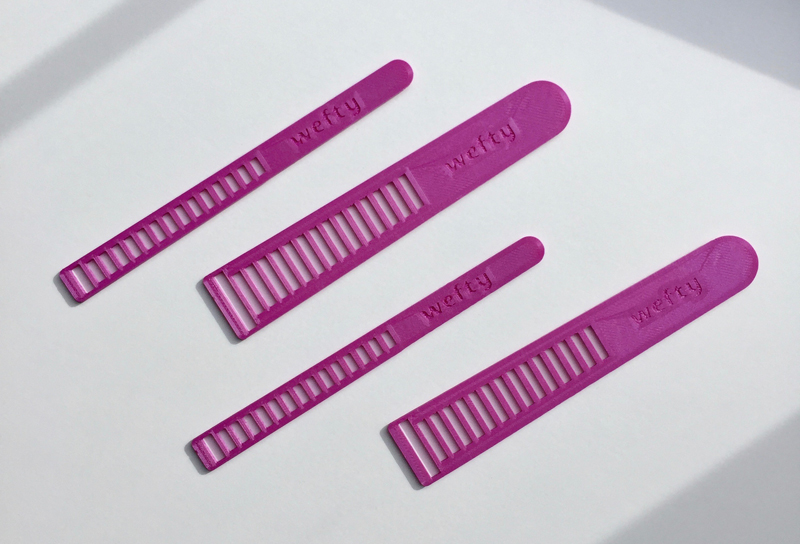
Final 3D print design.
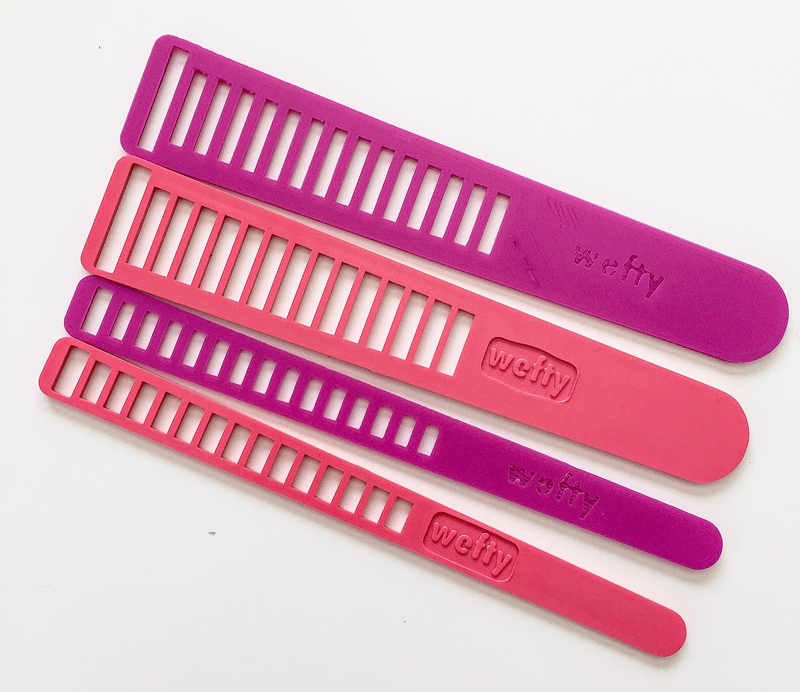
Side-by-side comparison with 3D printed needle and injection molded needle.
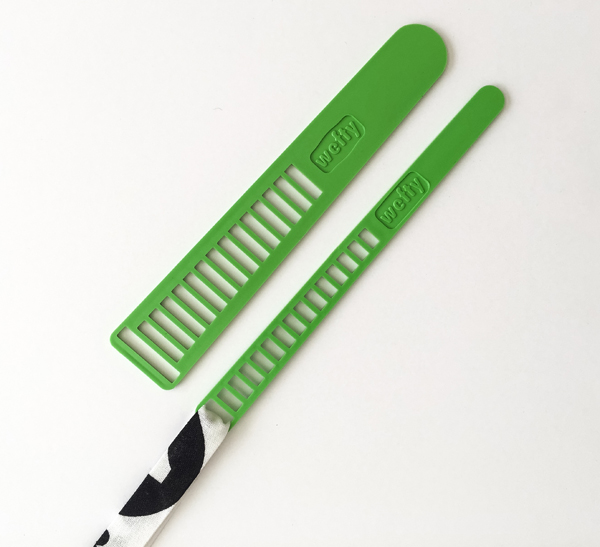
The WEFTY Needle today.

Tara J Curtis
contributor
Tara J Curtis is a Mental Health Therapist turned Craft Entrepreneur, and Inventor of the WEFTY fabric weaving needle. She is an enthusiastic teacher dedicated to helping sewists incorporate fabric weaving into their projects. You can find images of her work @WEFTYNeedle on Facebook, Instagram, and Pinterest, and watch her instructional and process videos at WEFTY Needle on YouTube. For more information and to sign up for her newsletter, visit www.weftyneedle.com.

I am a proud owner of WEFTY needles!!! Thanks so much for sharing the details of your journey.
Yay!!! Thank you for your support!
Hello Tara,
I am looking for the Wefy needle set 1/2″ and 1″. I can not find anyone who has them in stock. I looking for 10 sets can you direct me to a supplier. I am enjoying using the tool and plan to share with others. I would greatly appreciate any assistance.
Thank you
Thanks for the informative post, Tara. It was interesting! I wish you the best, and congrats on your success!
Thanks Janelle!
Such an informative, fascinating post! Thank you so much for sharing with us, Tara!
Wefty needles are the bomb! Thanks for sharing your journey Tara.
Thank you for all this information Tara. I have often wondered about manufacturing something and hearing the steps involved is very helpful!
I’m so proud of you, Tara!
I also have it and I love your story! Hope to see you again soon at QuiltCon Tara! Hugs from Mexico.
So glad you are someone I have had a chance to interact and talk to. This story is so awesome.
Hi Tara
What a fantastic piece of equipment to have in the sewing room!
Better that the purple thang that I thought was created by some special sewing guru!
You take the cake
I’m hoping one day you will travel down under to do some workshops for us.
If you decide to come to Australia I’d love to arrange some classes with you through the sewing groups I’m involved with.
Congratulations on such (what seems like) a very simple little tool!
All the very best for the future
Marilyn Lynch
Epsom
Victoria
Australia
Are the wefty needles available for purchase?
Unfortunately, no, but I believe Mathew Mx Domestic has a new version: https://mxdomestic.com/products/mx-weaver-2-piece-fabric-weaving-threading-tool-set-by-mx-domestic